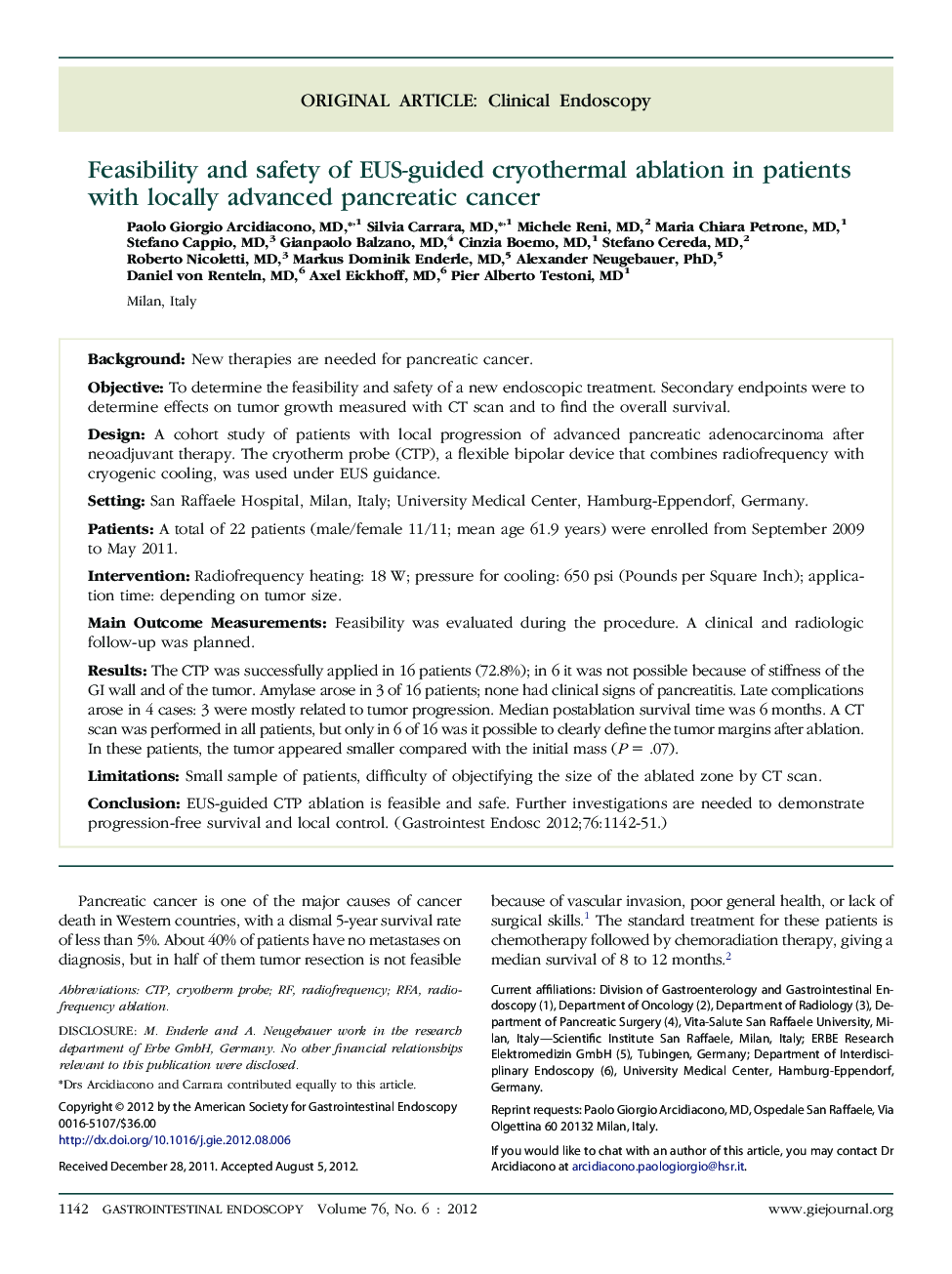| Article ID | Journal | Published Year | Pages | File Type |
|---|---|---|---|---|
| 3304773 | Gastrointestinal Endoscopy | 2012 | 10 Pages |
BackgroundNew therapies are needed for pancreatic cancer.ObjectiveTo determine the feasibility and safety of a new endoscopic treatment. Secondary endpoints were to determine effects on tumor growth measured with CT scan and to find the overall survival.DesignA cohort study of patients with local progression of advanced pancreatic adenocarcinoma after neoadjuvant therapy. The cryotherm probe (CTP), a flexible bipolar device that combines radiofrequency with cryogenic cooling, was used under EUS guidance.SettingSan Raffaele Hospital, Milan, Italy; University Medical Center, Hamburg-Eppendorf, Germany.PatientsA total of 22 patients (male/female 11/11; mean age 61.9 years) were enrolled from September 2009 to May 2011.InterventionRadiofrequency heating: 18 W; pressure for cooling: 650 psi (Pounds per Square Inch); application time: depending on tumor size.Main Outcome MeasurementsFeasibility was evaluated during the procedure. A clinical and radiologic follow-up was planned.ResultsThe CTP was successfully applied in 16 patients (72.8%); in 6 it was not possible because of stiffness of the GI wall and of the tumor. Amylase arose in 3 of 16 patients; none had clinical signs of pancreatitis. Late complications arose in 4 cases: 3 were mostly related to tumor progression. Median postablation survival time was 6 months. A CT scan was performed in all patients, but only in 6 of 16 was it possible to clearly define the tumor margins after ablation. In these patients, the tumor appeared smaller compared with the initial mass (P = .07).LimitationsSmall sample of patients, difficulty of objectifying the size of the ablated zone by CT scan.ConclusionEUS-guided CTP ablation is feasible and safe. Further investigations are needed to demonstrate progression-free survival and local control.
